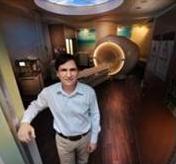Advertisment
Evidence-based guidelines enable optimal treatment of common low-back pain
While scientific evidence suggests that less is typically more when it comes to diagnosing and treating low-back pain in the US, the number of expensive imaging exams and surgeries done… click here for more information
While scientific evidence suggests that less is typically more when it comes to diagnosing and treating low-back pain in the U.S., the number of expensive imaging exams and surgeries done on patients continues to rise, researchers say.
More than 25 percent of American adults report at least one episode of acute low-back pain in the past three months and the annual total price tag is about $100 billion, according to a study in an issue of the Journal of the American College of Radiology focusing on health care reform.
“For the great majority of patients, you watch them closely for a month, use conservative measures and they tend to do a lot better at significantly less cost,” said Dr. Scott E. Forseen, neuroradiologist at the Medical College of Georgia at Georgia Health Sciences University and the study’s corresponding author. “Studies also show that once you seek imaging, such as a magnetic resonance study, you are more likely to also seek some type of surgical intervention.” In fact, rates of back surgery in the U.S. are about 40 percent higher than in other developed countries.
Forseen and co-author Dr. Amanda S. Corey, a neuroradiologist at Emory University Hospital in Atlanta, put together a set of diagnosis and treatment guidelines based on the overwhelming evidence that high-tech images and back surgeries don’t improve outcomes for most patients.
Exceptions include the red flags for new back pain, such as in a breast cancer patient, where it could signal the cancer has spread; a patient with a fever, indicating a significant infection is to blame; in the elderly, where osteoporosis can result in compression fractures that can paralyze; or following trauma. But for most people with an occasional bout of non-specific low back pain, even with some accompanying nerve pain, tingling and muscle numbness, careful observation along with over-the-counter pain medication and targeted physical activity, may be all the doctor needs to order, Forseen said. If problems persist past four weeks, other measures, including imaging, may be beneficial.
These types of evidence-based clinical practice guidelines are a hallmark of health care reform and will drive future practice and payment. While many related professional organizations, such as the American Pain Society and American College of Physicians, have published fairly consistent guidelines, the diagnosis and treatment of low-back pain in the U.S. remains inconsistent, with little consensus among physicians about what does work.
Forseen and Corey worked to make the best practices easily accessible to physicians in a variety of practice settings. Their decision support tools can be incorporated, for example, into an electronic medical record system that sends an unobtrusive reminder of the best practices or even blocks physicians from ordering tests considered inappropriate, Forseen said.
“A physician wants to order a lumbar MRI for a patient with low-back pain and the electronic medical record will respond: Please note that for nonspecific low-back pain conservative measures and no image are recommended,” Forseen said. Some apps even pull up the original studies on which guidelines are based. On the other end of the spectrum, the information can be converted into a simple flow chart. Some insurance carriers are already waiving their preauthorization requirements for expensive tests such as an MRI, when these evidence-based clinical practice guidelines are followed.
“These are expensive exams,” Forseen said of MRIs, which can cost several thousand dollars. “It’s one thing to do an expensive exam that might change your life, but the data does not show that imaging early affects the outcome for the majority of these patients. However, it does dramatically affect the cost.” As a neuroradiologist, Forseen is a proponent of appropriate imagining and when a red flag patient presents, MRI is considered the best initial imaging tool, he said.
Common causes of low back pain include weak stomach and back muscles, obesity, inactivity, sitting for long periods at work stations or simply the wrong random movement. “You bend down and hit that right angle and feel a twinge,” Forseen said. On the other end of the spectrum, muscle strain resulting from strenuous physical activity can be the culprit. Forseen notes there are no known side effects for an MRI, unless a contrast medium is used to enhance images. The studies, which utilize large magnets to produce images, cannot be performed on individuals with implanted devices such as pacemakers.
For more information contact: Toni Baker
tbaker@georgiahealth.edu






